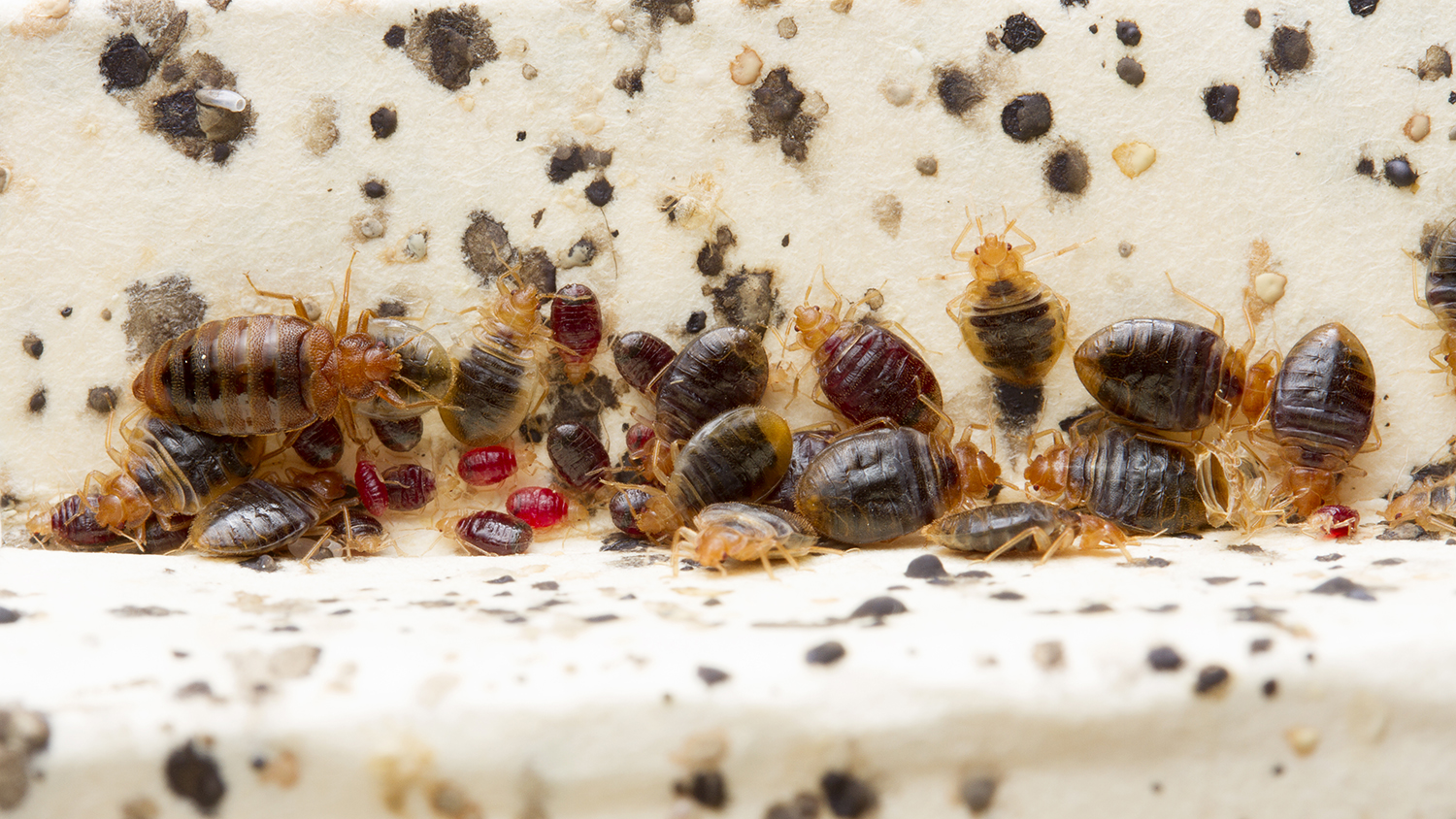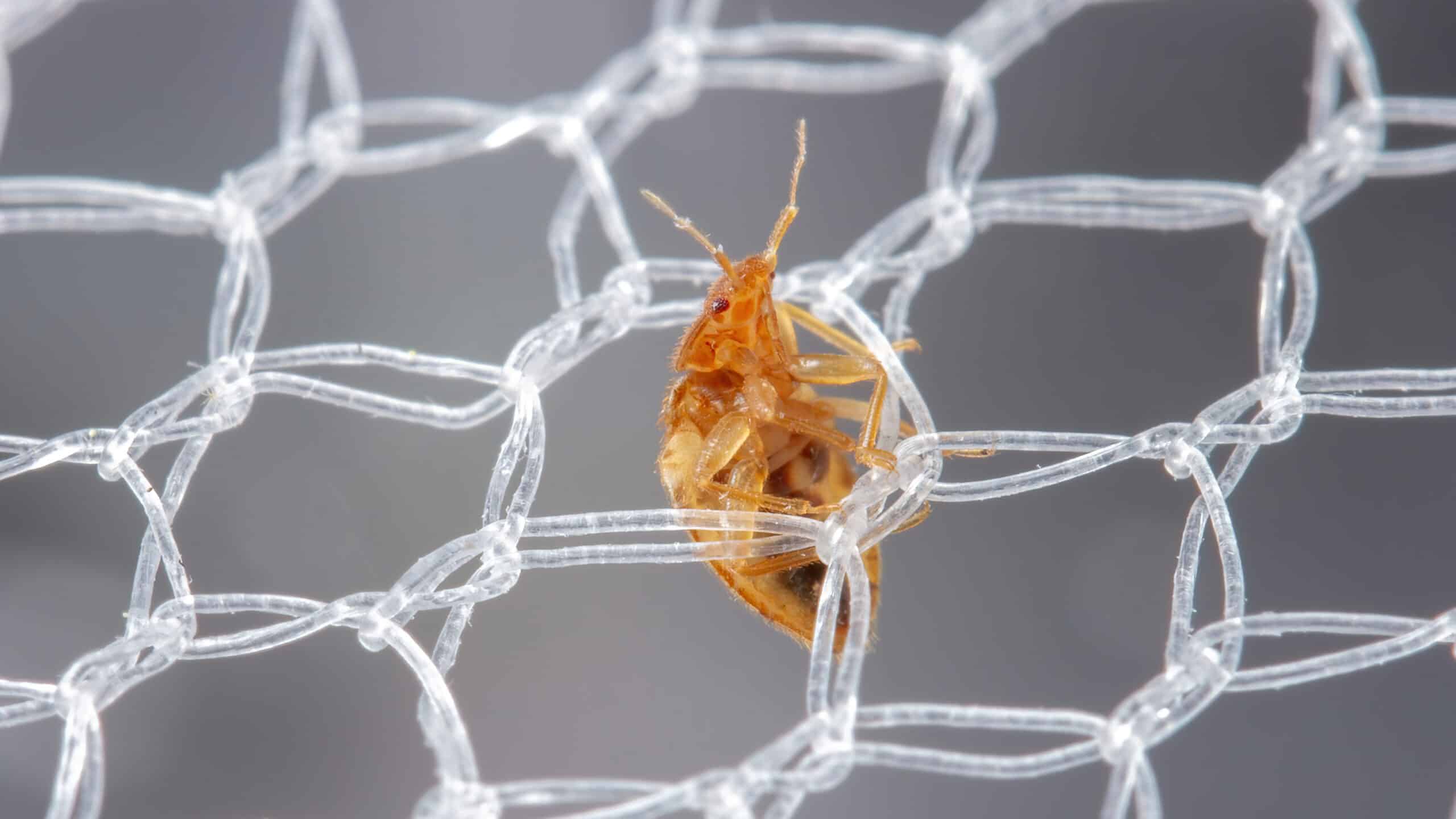Bed Bug Histamines Are Substantial, Persistent in Infested Homes

For Immediate Release
New research findings could turn perceptions of the already despised bed bug from nuisance pest into medically important threat. A study from North Carolina State University shows that histamine levels are substantially higher in homes infested by bed bugs than in pest-free homes, and that these histamine levels persist for months – even if the bed bugs have been eliminated from the home.
NC State post-doctoral researcher Zachary DeVries and colleagues from NC State and the N.C. Dept. of Health and Human Services conducted a Raleigh-based study to compare histamine levels in homes with and without bed bug infestation. The researchers also evaluated the extent to which treatment and time affect those histamine levels.
“Histamine levels in bed bug infested homes were at least 20 times higher than histamine levels in homes without bed bugs,” DeVries said. “And these levels didn’t decrease much three months after treating the infested homes with heat and insecticides.”
In humans, histamines are generally released as part of an immune response. They cause inflammation and help allow other immune system chemicals to fight a pathogen or to do cellular repair work. Histamines, though, can have deleterious effects in humans, including rashes when contacted with skin and respiratory problems when inhaled – think of the allergic reactions to certain foods, pollen, mold or other environmental conditions.
“Histamines are used in skin and respiratory allergy tests as a positive control – they cause a bump in skin tests and restrict breathing in respiratory tests,” DeVries said.
Bed bugs naturally give off high levels of histamine in their feces; DeVries says that bed bugs use histamine as a marker of a good place to aggregate. When bed bugs find their way into homes, they tend to aggregate in bedrooms where sleeping humans – the food source for bed bugs – spend a good part of their day.
Using a Raleigh apartment complex as a study site, the researchers searched specific apartments for evidence of bed bugs and also for apartments not impacted by bed bugs, and then collected the household dust in both apartment types. Those with bed bug infestations had substantially higher histamine levels in dust than apartments with no evidence of bed bugs as well as “control” apartments some miles away that had no history of bed bug infestation.
The researchers also tracked histamine levels over time after having professional heat treatments occur in a subset of the infested apartments. Histamine levels did not decline significantly three months after treatment, showing the chemical’s capacity to persist despite extreme heat.
“A combination of heat treatment to eradicate bed bugs and rigorous cleaning to eliminate some of the household dust could be a way to reduce these histamine levels; we’ll do future testing to bear that out,” DeVries said. “We’ll also further investigate the effects of histamine in an indoor environment, including chronic exposure to histamine at low levels.”
The research appears in PLOS ONE. Coby Schal, Blanton J. Whitmire Professor of Entomology at NC State, co-authored the paper along with research specialist Richard Santangelo. Alexis Barbarin of the N.C. Dept. of Health and Human Services also co-authored the paper.
Funding for the work came from the U.S. Department of Housing and Urban Development, the Alfred P. Sloan Foundation, the National Institute of Environmental Health Sciences, and NC State’s Blanton J. Whitmire endowment.
– kulikowski –
Note to editors: An abstract of the paper follows.
“Histamine as an emergent indoor contaminant: Accumulation and persistence in bed bug infested homes”
Authors: Zachary DeVries, Richard Santangelo and Coby Schal, North Carolina State University; Alexis Barbarin, N.C. Dept. of Health and Human Services
Published: Online Feb. 12, 2018, in PLOS ONE
DOI: 10.1371/journal.pone.0192462
Abstract: Histamine is used in bronchial and dermal provocation, but it is rarely considered an environmental risk factor in allergic disease. Because bed bugs defecate large amounts of histamine as a component of their aggregation pheromone, we sought to determine if histamine accumulates in household dust in bed bug infested homes, and the effects of bed bug eradication with spatial heat on histamine levels in dust. We collected dust in homes and analyzed for histamine before, and up to three months after bed bug eradication. Histamine levels in bed bug infested homes were remarkably high (mean = 54.6±18.9 µg/100 mg of sieved household dust) and significantly higher than in control homes not infested with bed bugs (mean < 2.5±1.9 µg/100 mg of sieved household dust). Heat treatments that eradicated the bed bug infestations failed to reduce histamine levels, even three months after treatment. We report a clear association between histamine levels in household dust and bed bug infestations. The high concentrations, persistence, and proximity to humans during sleep suggest that bed bug-produced histamine may represent an emergent contaminant and pose a serious health risk in the indoor environment.
- Categories:


